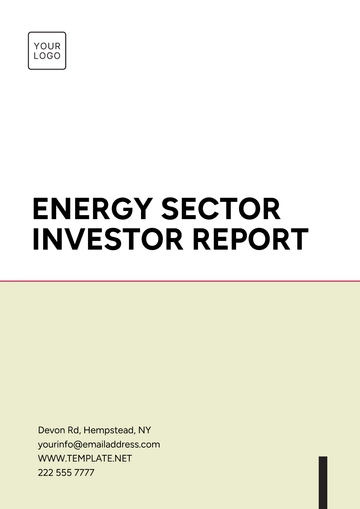INVESTOR REQUIREMENTS
1. Investor Profile
Investors must meet specific criteria to qualify for investment opportunities. These criteria ensure that investors have the necessary financial stability and experience to understand and manage the risks associated with their investments.
1.1 Accredited Investor
To qualify as accredited investors, individuals must meet the definitions provided by regulatory authorities, which typically include financial criteria and experience in investments. Accredited investors are presumed to have the sophistication needed to make informed investment decisions.
Criteria
Details | Example |
|---|
Net Worth | Over $1 million excluding primary residence. This ensures the investor has substantial financial resources beyond their primary home, providing a cushion against potential losses. |
Income | Over $200,000 annually (single) or $300,000 (married) for the last two years. This criterion demonstrates a stable and significant income stream, indicating the investor can handle the financial risks associated with investments. |
Experience | Significant experience in financial markets. Investors should have a background in managing investments, understanding market dynamics, and making strategic financial decisions. |
1.2 Non-Accredited Investor
Non-accredited investors do not meet the financial thresholds set for accredited investors and therefore face more restrictions to protect them from high-risk investments. These investors typically have less experience and financial stability.
Investment Limitations: Non-accredited investors may only invest a limited portion of their net worth or annual income in certain investment opportunities to mitigate risk.
Additional Disclosures: Companies may be required to provide more detailed disclosures to non-accredited investors to ensure they fully understand the risks involved.
2. Investment Amount
The amount of investment is a critical factor and varies based on the level of risk and the type of investment opportunity. Setting minimum investment amounts helps ensure that investors are serious and committed.
2.1 Minimum Investment
Each investment opportunity has a minimum investment amount, which helps to manage administrative costs and ensure that investors have a significant stake in the opportunity.
Investment Type
Minimum Amount | Example |
|---|
Equity Investments | $50,000. Equity investments involve purchasing shares of a company, providing potential for high returns but also higher risk. |
Debt Investments | $25,000. Debt investments involve lending money to an entity in exchange for regular interest payments, offering more stable but typically lower returns. |
2.2 Fund Commitment
Investors may be required to commit funds for a minimum period to ensure stability and proper management of the funds. This commitment aligns the interests of investors with the long-term strategy of the investment opportunity.
Fund Type
Commitment Period | Example |
|---|
Venture Capital Fund | 7-10 years. Venture capital funds invest in early-stage companies, requiring a longer commitment due to the time needed for startups to grow and potentially exit. |
Real Estate Fund | 5-7 years. Real estate investments often require time to develop properties, increase their value, and generate returns through sales or rental income. |
3. Documentation and Compliance
Investors are required to complete necessary documentation and adhere to compliance requirements. These processes are designed to protect both the investors and the company by ensuring transparency and adherence to legal standards.
3.1 Subscription Agreements
Investors must sign subscription agreements outlining the terms of their investment and their rights and obligations. This legal document specifies the amount invested, the type of investment, and the investor's rights regarding dividends, voting, and information access.
3.2 Know Your Customer (KYC) and Anti-Money Laundering (AML) Compliance
To comply with KYC and AML regulations, investors must provide detailed personal and financial information. This process helps prevent financial crimes such as money laundering and fraud.
Required Documentation:
Proof of Identity: Passport, Driver's License, or other government-issued ID to verify the investor's identity.
Proof of Address: Utility Bills, bank statements, or rental agreements to confirm the investor's residential address.
Financial Information: Bank statements, tax returns, or financial statements to assess the investor's financial status and ensure they meet investment criteria.
4. Review and Approval Process
Each investment opportunity undergoes a thorough review and approval process to ensure it meets the company's standards and regulatory requirements. This process helps mitigate risks and identify viable investment opportunities.
4.1 Initial Screening
During the initial screening, potential investments are evaluated based on fundamental criteria to determine eligibility. This includes assessing the business model, market potential, and alignment with the investment strategy.
4.2 Due Diligence
Comprehensive due diligence is conducted, examining various aspects such as:
Financial Health: Analysis of financial statements, revenue models, and profitability.
Market Potential: Evaluation of market size, growth potential, and competitive landscape.
Management Team: Assessment of the experience, track record, and capabilities of the company's leadership.
5. Investor Reporting
Investors will receive regular reports and updates regarding their investments to ensure transparency and open communication. These reports provide insights into the performance and status of their investments.
5.1 Financial Statements
Periodic financial statements, such as balance sheets, income statements, and cash flow statements, will be provided to give investors a clear picture of the financial health and performance of their investments.
5.2 Performance Reports
Detailed performance reports will be shared with investors, including metrics such as:
Return on Investment (ROI): Measures the profitability of the investment.
Cash Flow: Provides insights into the inflows and outflows of cash, highlighting liquidity and operational efficiency.
Other Relevant Financial Indicators: Such as debt ratios, profit margins, and revenue growth.
6. Exit Strategy
A clear exit strategy must be defined to provide investors with an understanding of how they can realize returns on their investments. Exit strategies are crucial for planning how and when investors can withdraw their capital and profits.
6.1 Liquidity Events
Potential liquidity events such as public offerings, mergers, and acquisitions should be identified as possible exit routes. These events provide opportunities for investors to sell their shares and realize their returns.
6.2 Secondary Market
The possibility of a secondary market for buying and selling interests in the investment should be explored. A secondary market allows investors to sell their shares to other investors, providing liquidity before the occurrence of a major liquidity event.
7. Risk Management
Comprehensive risk management strategies should be in place to protect the interests of investors. Effective risk management helps minimize potential losses and ensures the long-term stability of the investment portfolio.
7.1 Diversification
Diversification strategies should be implemented to spread risk across various asset classes and investment opportunities. This reduces the impact of poor performance in any single investment on the overall portfolio.
7.2 Regular Monitoring
Continuous monitoring and assessment of investment performance and market conditions should be conducted to mitigate risks. This involves:
Regular Reviews: Periodic evaluations of the investment's performance against benchmarks and goals.
Market Analysis: Ongoing analysis of market trends and economic conditions to anticipate potential risks and opportunities.
Adjustments: Making necessary adjustments to the investment strategy based on performance reviews and market analysis to optimize returns and manage risks effectively.
Requirements Templates @ Template.net






























